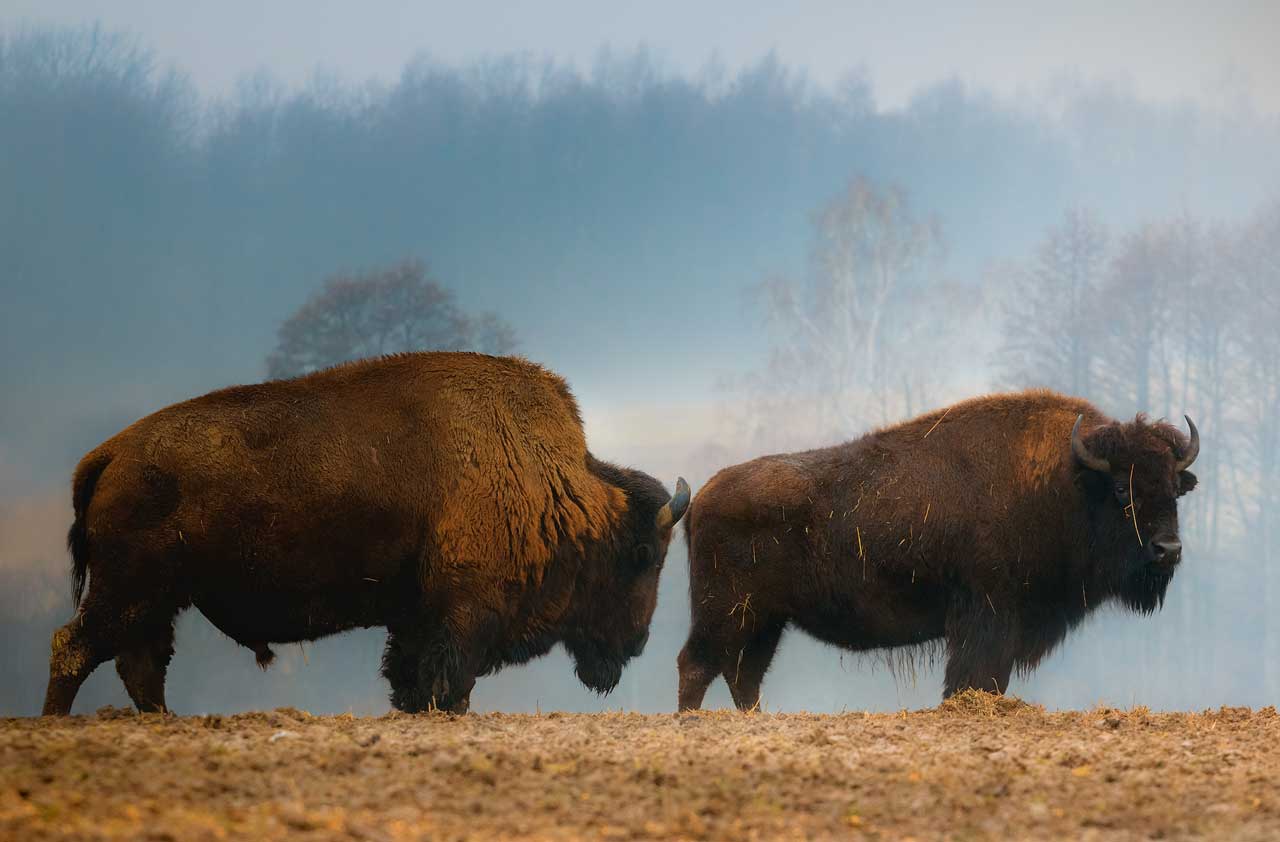Bank of America Investing Chief: Focus on High-Quality Stocks
This market analyst sees the bull market becoming a buffalo market: "Heavy, rather hairy, and unattractive at times."


Christopher Hyzy is the chief investment officer for the Global Wealth and Investment Management division of Bank of America. Here are excerpts from our interview:
Hyzy: We’re still in a grind. All bull markets climb a wall of worry, but this one has a bit of grease on it. At the end of last year, two of the main worries were the downdraft in oil prices—a big reason for the recession in corporate profits—and the strength in the dollar, which hurt U.S. manufacturing companies and led investors to believe a recession was around the corner. A third worry was that negative interest rates were coming to the U.S. The final worry was that China’s economy was weaker than the government there was saying. Now the stock market has traded up due to stabilizing oil, a weaker dollar, stimulus in China to support growth, and a perception that the Federal Reserve Board will not implement negative rates here and will be very, very patient about raising them. The U.S. stock market is now fairly valued. Between now and the end of the year, Standard & Poor’s 500-stock index will move between 2,025 and 2,150. Potential surprises would be further weakening of the dollar or the price of a barrel of oil rising to the mid $50s. That could add $3 to $5 to the S&P’s earnings per share, and that could push the index to 2,200.

Both the bull market, assuming we’re still in one, and the economic expansion are among the longest on record. How much life is left? When economic growth is slow and there’s little upward pressure on inflation, you lengthen the cycle by default. There’s less boom and bust; it feels more as though you’re walking in mud. We’re in a buffalo market. It’s not a bear, not technically a bull—but it’s in the bull family. It’s heavy, rather hairy and unattractive at times. It can roam for long periods but then get nervous out of the blue and run the other way. This sort of sideways market will continue into 2017, but volatility can spike at any time. We’ll close out the year on a high note, but we’re talking about mid-single-digit stock returns—in the range of 7% to 8%, including dividends.

Sign up for Kiplinger’s Free E-Newsletters
Profit and prosper with the best of expert advice on investing, taxes, retirement, personal finance and more - straight to your e-mail.
Profit and prosper with the best of expert advice - straight to your e-mail.
What themes do you see taking shape? We see a movement from high-growth areas that did so well over the past few years into economy-sensitive, bargain-priced assets—what we call cyclical value—that significantly underperformed. Lately, energy, financial, materials and industrial companies have been going through a mini melt-up. Emerging markets are coming back to life. We expect the shift from growth to cyclical value to continue into 2017.
Where are the best opportunities? The most important thing is to choose high-quality names in a mix of sectors. Overweight energy, financials, tech and health care. We also like companies that provide consumer non-necessities, but not big-box retailers. People are spending on experiences, less so on goods. Travel, leisure and entertainment are areas that should do well.
Where would you invest outside the U.S.? Our preference is for the U.S.—it’s the engine of growth in the developed world. But Europe and Japan offer good value compared with the U.S. More economic restructuring is needed for emerging markets to be sustainable investments long term, but if you have been underweight in those markets, you should now be closer to a neutral weighting.
What should investors make of the recent strength in small-company stocks? That’s a classic example of money flowing into areas that have lagged. We’re neutral to slightly positive on small caps. In the end, our preference is for high-quality large caps with dividend yields of 2.5% to 4.5%. We look for companies that we think will raise their dividend, don’t need to take on a lot of debt and have a level of earnings growth above that of the S&P. Most of them will be found in tech, health care and industrials.
How should investors position themselves for the presidential election? Making a bet on one or two sectors is not recommended. If there is more pressure on health care firms because of drug-pricing controversies, any weakness could be a buying opportunity for the better-quality companies. If there are worries over borders, protectionism and trade, the dollar could get stronger, and domestically focused companies will do better. Both parties favor spending on aerospace and defense.
Get Kiplinger Today newsletter — free
Profit and prosper with the best of Kiplinger's advice on investing, taxes, retirement, personal finance and much more. Delivered daily. Enter your email in the box and click Sign Me Up.

Anne Kates Smith brings Wall Street to Main Street, with decades of experience covering investments and personal finance for real people trying to navigate fast-changing markets, preserve financial security or plan for the future. She oversees the magazine's investing coverage, authors Kiplinger’s biannual stock-market outlooks and writes the "Your Mind and Your Money" column, a take on behavioral finance and how investors can get out of their own way. Smith began her journalism career as a writer and columnist for USA Today. Prior to joining Kiplinger, she was a senior editor at U.S. News & World Report and a contributing columnist for TheStreet. Smith is a graduate of St. John's College in Annapolis, Md., the third-oldest college in America.
-
 Married? Five Ways to Ensure Your Estate Plans Work in Tandem
Married? Five Ways to Ensure Your Estate Plans Work in TandemGetting on the same page now means fewer potential problems when it counts.
By Kiplinger Advisor Collective
-
 12 Investments No Retiree Should Make
12 Investments No Retiree Should MakeIn retirement, when it's wise to take fewer risks with your nest egg, some investments are just nuts.
By David Rodeck
-
 Why Is Warren Buffett Selling So Much Stock?
Why Is Warren Buffett Selling So Much Stock?Berkshire Hathaway is dumping equities, hoarding cash and making market participants nervous.
By Dan Burrows
-
 If You'd Put $1,000 Into Google Stock 20 Years Ago, Here's What You'd Have Today
If You'd Put $1,000 Into Google Stock 20 Years Ago, Here's What You'd Have TodayGoogle parent Alphabet has been a market-beating machine for ages.
By Dan Burrows
-
 Stock Market Today: Stocks Retreat Ahead of Nvidia Earnings
Stock Market Today: Stocks Retreat Ahead of Nvidia EarningsMarkets lost ground on light volume Wednesday as traders keyed on AI bellwether Nvidia earnings after the close.
By Dan Burrows
-
 Stock Market Today: Stocks Edge Higher With Nvidia Earnings in Focus
Stock Market Today: Stocks Edge Higher With Nvidia Earnings in FocusNvidia stock gained ground ahead of tomorrow's after-the-close earnings event, while Super Micro Computer got hit by a short seller report.
By Karee Venema
-
 Stock Market Today: Dow Hits New Record Closing High
Stock Market Today: Dow Hits New Record Closing HighThe Nasdaq Composite and S&P 500 finished in the red as semiconductor stocks struggled.
By Karee Venema
-
 Stock Market Today: Stocks Pop After Powell's Jackson Hole Speech
Stock Market Today: Stocks Pop After Powell's Jackson Hole SpeechFed Chair Powell's Jackson Hole speech struck a dovish tone which sent stocks soaring Friday.
By Karee Venema
-
 Stock Market Today: Stocks Drop Ahead of Powell's Jackson Hole Speech
Stock Market Today: Stocks Drop Ahead of Powell's Jackson Hole SpeechSentiment turned cautious ahead of Fed Chair Powell's highly anticipated speech Friday at the Jackson Hole Economic Symposium.
By Karee Venema
-
 Stock Market Today: Stocks Rise After Jobs Data Lifts Rate-Cut Odds
Stock Market Today: Stocks Rise After Jobs Data Lifts Rate-Cut OddsPreliminary data from the Bureau of Labor Statistics shows job growth was lower than previously estimated.
By Karee Venema